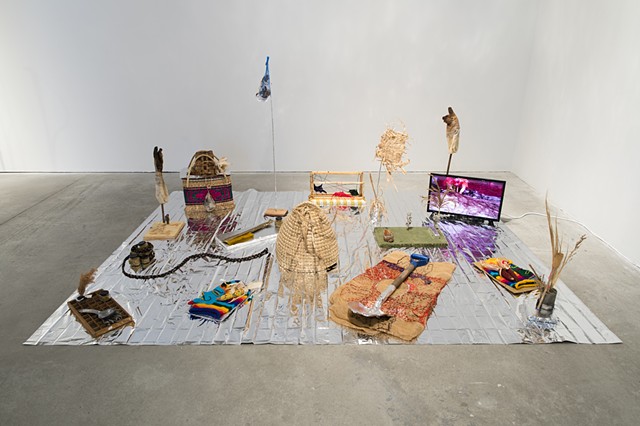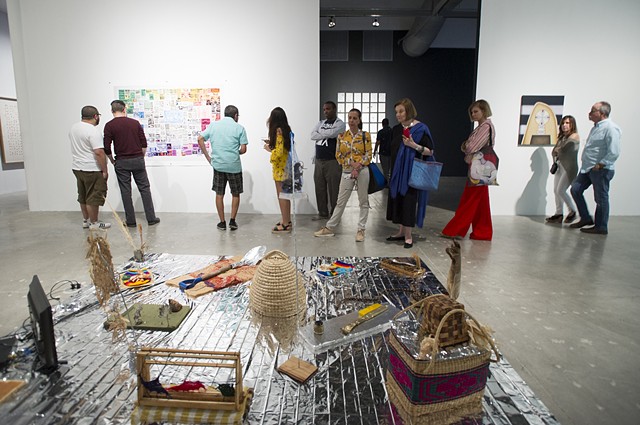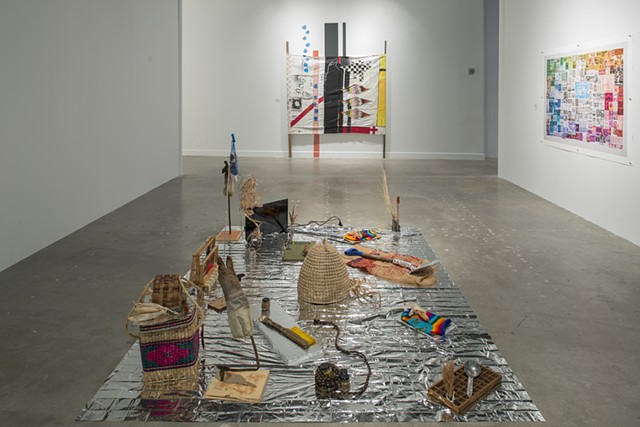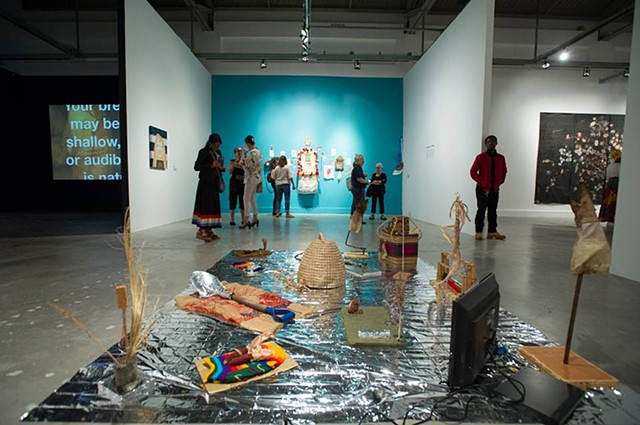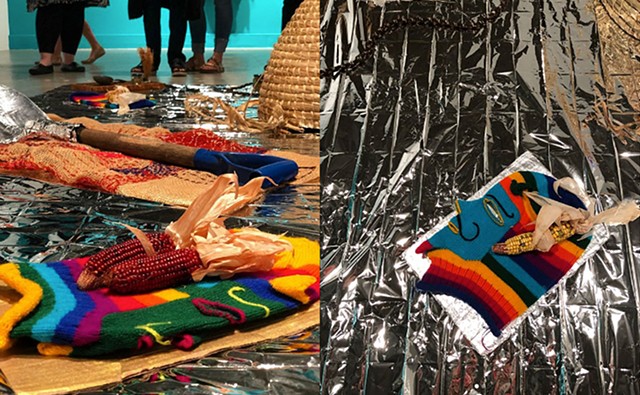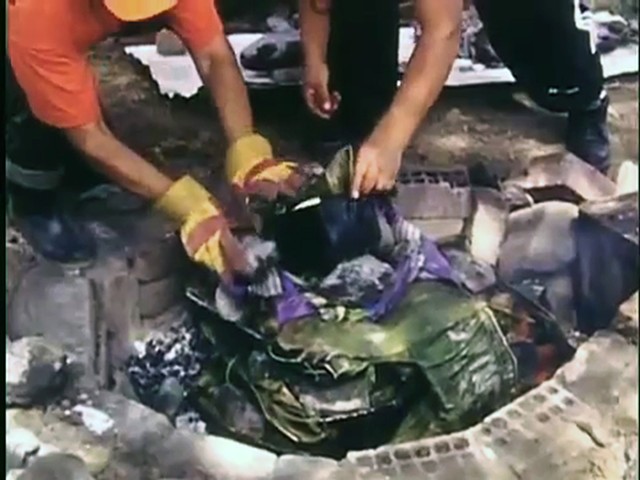Pachamanca Blanket
For St. Louis-based artist, Juan William Chávez, beekeeping took on shamanic aspects when the artist began receiving information from the bees about the environment. Chávez began his interspecies collaboration with the bees of Pruitt-Igoe when he created a site specific beehive installation in the ruins of the United States’s largest public housing complex. Once occupying thirty-three, eleven-story buildings across 56 acres of lands north of downtown St. Louis, Pruitt-Igoe was also a secret site for testing the effects of chemicals on its primarily black population during the Cold War. Since Pruitt-Igoe was demolished in 1976, the lands upon which the complex once stood has been overtaken by forest. Through his work with the bees, Chávez has been able to transform the public perception of the abandoned land within its community from a toxic landscape to be disregarded to one with the capacity to be renewed.
In conjunction with a community-oriented social practice Chávez’s research-based practice also produces objects and installation. One such installation, Pachamanca Blanket, explores beekeeping as a ceremonial practice in a presentation inspired by an Andean ritual. Taking the form of a Pachamanca, a traditional Andean means of preparing food by burying it under hot stones in the ground, the installation lays out a tableau of beekeeping tools with foods grown during urban agriculture workshops within the community as feast. In a Pachamanca, the preparation of the earthen oven takes on ritual dimensions when a fire is built to heat rocks, a hole is dug in the ground and filled with meats and vegetables. The details of such a process are contained in a video included in the installation. The resulting meal becomes an offering to the earth which is returned to the meal preparers in a mirroring of the cycles of nature: death, burial, and rebirth. The shovel displayed in Pachamanca Blanket is the very same used by Chávez to dig the hole in the earth; the corn in the video, the same grown in Chávez’s fields. These elements are brought together with those from the beehive, such as pollen collected, and racks of the hive, as sacred tools with a personal and collective history of use. In Peru, the Pachamanca feast would be laid out on a poncho, for which Chávez substitutes shiny mylar, heat-preserving survival blanket. This aesthetic decision takes on political dimensions when considering the new threat to the bees and the land. Beekeeping, then, like the Pachamanca, is a communion with nature in its own time, but also a practice of protest against those agents, mostly as human corporations employing chemical warfare against the environment, who seek to undermine that balance.
- Curator Risa Puleo
